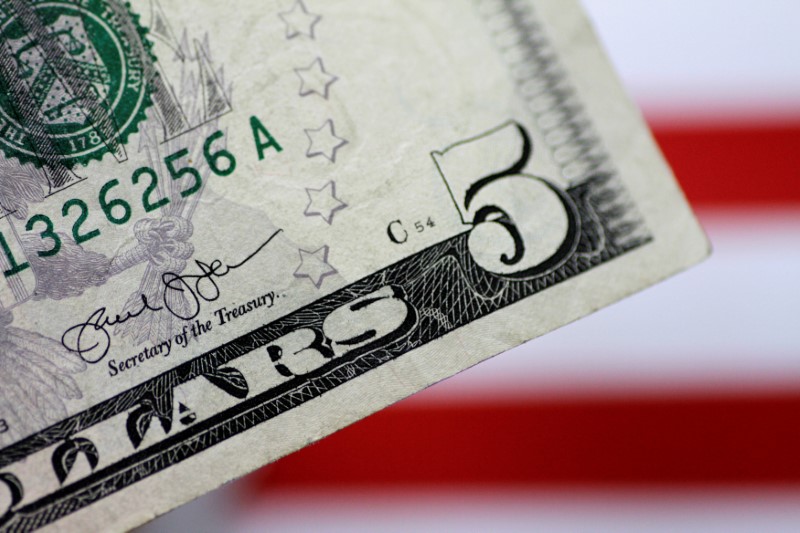Street Calls of the Week
Investing.com - The U.S. dollar fell further Wednesday, continuing to head lower on uncertainty over President Donald Trump’s tax bill, while sterling jumped after a hot inflation report.
At 04:30 ET (08:30 GMT), the Dollar Index, which tracks the greenback against a basket of six other currencies, fell 0.4% to 99.595, extending a 1.3% two-day decline.
U.S. tax bill, G7 meeting in focus
President Donald Trump’s tax cut and spending bill has apparently run into opposition from several dissenting lawmakers, and faces a critical stress test on Wednesday as Republicans in the U.S. House of Representatives try to overcome internal divisions.
The bill, if approved, could add $3 trillion to $5 trillion to the country’s debt, according to nonpartisan analysts, and comes after Moody’s downgraded its U.S. credit rating by a notch last week over growing national debt.
Ballooning fiscal debt, trade frictions, and weakened confidence have dragged the dollar around 8% lower so far this year.
Traders are also wary of holding dollars ahead of the Group of Seven finance ministers’ meetings currently underway in Canada, which will end on Thursday.
“There is a low probability-high impact of any suggestions that the G7’s longstanding commitment to allow free floating of exchange rates might be revised to allow dollar weakening,” said analysts at ING, in a note.
“If current speculation proves accurate – and the U.S. is pushing for stronger trading partner currencies – it could not only prompt sharp appreciation in those currencies but also weigh on the dollar more broadly.”
Sterling gains on hit inflation release
In Europe, GBP/USD rose 0.2% to 1.3419, with sterling surging after data released earlier Wednesday showed that British inflation surged by more than expected in April.
The annual rate of consumer price growth leapt to 3.5% in April from 2.6% in March, the Office for National Statistics said, the highest reading since January 2024 and the largest increase in the rate since 2022 when inflation was rocketing.
However, “a closer look at the data shows that most of the jump can be traced back to a spike in road tax, which had an outsized effect, along with higher airfares and package holiday prices, both of which were skewed by the timing of Easter and the specific measurement day in April,” ING said.
“While expectations for a June hold are all but cemented, it doesn’t look like enough to dismiss an August cut.”
EUR/USD traded 0.4% higher to 1.1324, with the euro benefiting from traders looking for alternatives for the weakening dollar.
The euro gained despite a conversation between U.S. President Donald Trump and Russian President Vladimir Putin yielding no progress in ending the war in Ukraine.
“The next key level is 1.150, but markets may want to back such a level with softer US data and perhaps a more optimistic story on Russia-Ukraine. For now, it seems a bit premature, and we prefer 1.130 as a near-term target,” said ING.
Yen gains after trade data
In Asia, USD/JPY traded 0.3% lower to 144.08, after data on Wednesday showed that Japan’s trade balance contracted unexpectedly in April, as heightened U.S. tariffs and a stronger yen dampened export growth, while imports held up slightly better than anticipated.
USD/CNY traded 0.2% lower to 7.2083, with the yuan benefitting from dollar weakness.
China’s commerce ministry on Wednesday criticized new U.S. curbs on Chinese chips, specifically opposing efforts to ban Huawei chips globally. Beijing recently warned that such moves could jeopardize the 90-day trade truce.
AUD/USD rose 0.4% to 0.6442, after falling in the previous session as the Reserve Bank of Australia cut interest rates by 25 basis points on Tuesday.
